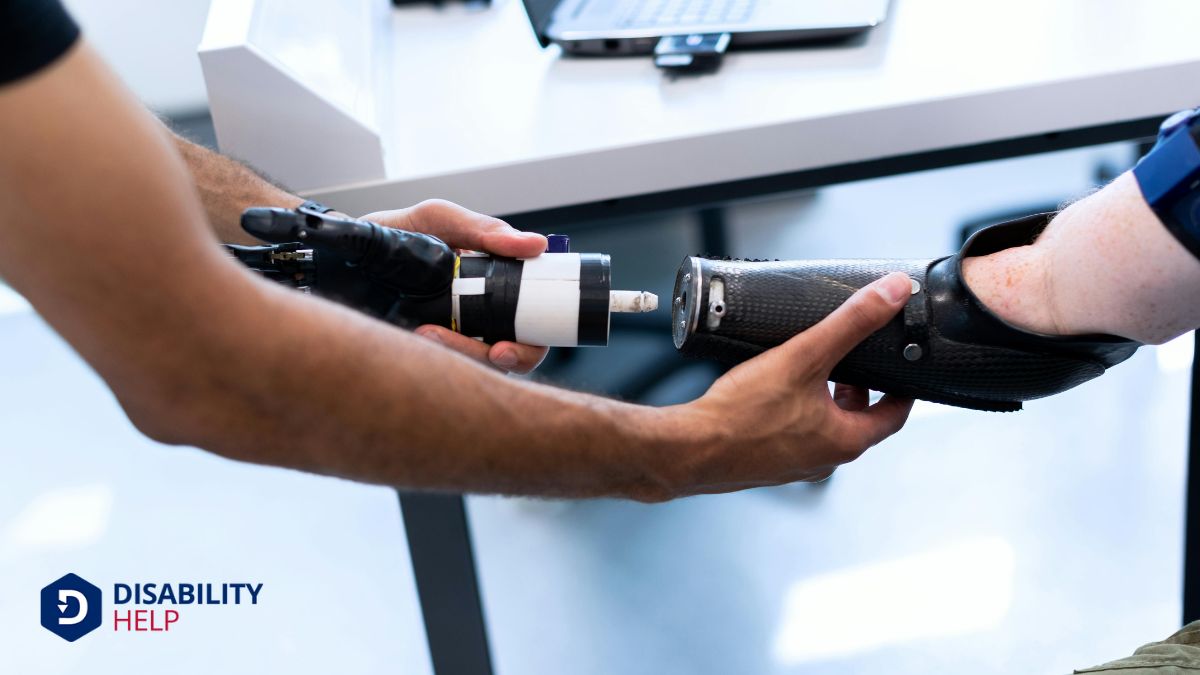VA disability back pay compensates us from the effective date of our claim to when it's approved, providing for any waiting period. The amount depends on our disability rating, dependent status, and compensation rates. Typically, once the VA approves our claim, we receive this accumulated pay in a lump sum. Filing our claim early is essential, as it helps set an earlier effective date, leading to more back pay. Submitting evidence promptly and understanding how ratings affect compensation also play key roles. By exploring these elements, we can anticipate and navigate the back pay process effectively.
Key Takeaways
- VA disability back pay covers the period from the effective claim date to the approval date.
- The effective date is often the claim filing date or when evidence supports the condition.
- Back pay can be extended from the original claim filing date if appeals adjust the effective date.
- Retroactive benefits are issued as a lump sum payment upon claim approval.
- Filing early and maintaining thorough documentation help maximize potential back pay.
Understanding VA Disability Back Pay
How exactly does VA disability back pay work? It's a question many of us have when navigating the VA benefits system. VA disability back pay is the compensation owed to veterans from the date their disability claim is effective to the date the VA finally approves it. This gap can sometimes be lengthy due to the processing time, so understanding how this back pay accumulates is essential.
When we file a disability claim, the VA assesses our medical records and service history to determine the severity of the disability and the appropriate compensation. The back pay serves to cover the period between the effective date of our claim and the approval date. This ensures we're compensated for the time we've waited for our benefits.
The VA calculates back pay by considering several factors like our disability rating, dependent status, and the statutory compensation rates. They use these variables to determine the monthly amount we're owed. Once our claim is approved, the VA issues a lump sum payment for the accumulated back pay. Understanding this process helps us anticipate the financial support we're entitled to and prepares us for the compensatory benefits we deserve.
Determining the Effective Date

Let's explore how the effective date for VA disability back pay is determined. We need to take into account the significance of the claim filing date and how the establishment of a service connection plays an important role.
Additionally, we'll look at how appeal decisions can impact this effective date, making sure we grasp how each factor affects our potential benefits.
Claim Filing Date Importance
The date we submit our VA disability claim plays a significant role in determining the effective date of our benefits, which directly impacts the amount of back pay we might receive. Understanding this timing can make a substantial difference in the benefits we ultimately receive. When we lodge our claim, the VA typically uses that filing date as the effective date, assuming our claim is approved. This means the earlier we submit, the more back pay we could potentially be entitled to, starting from that effective date.
Let's say we postpone filing our claim. Even if we eventually win our case, the effective date—and thus our back pay—won't reach as far back as it could have if we'd filed sooner. Essentially, by getting our claim in as early as possible, we maximize our chances of receiving the full benefits we're entitled to.
It's crucial to gather the necessary documentation and seek assistance if needed to guarantee our claim is filed promptly.
Ultimately, understanding the significance of the filing date helps us navigate the VA disability process more effectively, ensuring we don't miss out on any benefits we've earned.
Service Connection Establishment
Establishing a service connection is a crucial step in determining the effective date for our VA disability benefits. When we file a claim, the VA needs to confirm that our disability is linked to our military service. This service connection is what allows us to receive benefits, and it influences the start date for our back pay.
The effective date is typically the date we initially filed our claim or when the VA first received our intent to file. However, if we submit additional evidence that clearly establishes the connection to our service, the effective date might shift to when the evidence indicates the disability began.
It's vital to provide detailed medical records and relevant service documentation to help the VA easily verify this connection.
Appeal Decision Impact
Many factors can influence the important date of our VA disability benefits, especially when an appeal decision is involved. Understanding how the VA determines this date can help us navigate the process more confidently. The important date usually ties back to either the date we filed our claim or when the VA received new evidence. However, when an appeal decision is in play, things can get a bit more complex.
If we've appealed a VA decision, the important date might be earlier than the decision date. This is because the VA often considers the date of the original claim, assuming continuous pursuit of the appeal. It's essential to keep all communication and documentation organized to confirm the correct date is applied. If our appeal results in a favorable decision, the back pay will reflect from the established important date, which may significantly impact the amount we receive.
Moreover, if the appeal introduces a new or secondary condition, the important date for those benefits might differ. Staying informed and proactive during the appeal process can confirm we receive the full benefits and back pay we're entitled to. Understanding these nuances empowers us in securing our rightful compensation.
Factors Affecting Back Pay

When we look at back pay for VA disability, several key factors come into play. The effective date determination, how quickly a claim is processed, and the timing of evidence submission all substantially impact the amount of back pay you might receive. Let's explore how each of these elements can influence your financial outcome.
Effective Date Determination
Determining the crucial date is essential for calculating VA disability back pay, as it basically dictates how far back the benefits will be paid. We need to focus on the "effective date," which is the date from which the VA recognizes your disability as service-connected. This date can greatly impact how much back pay you receive.
The effective date is typically the later of either the date the VA received your claim or the date the evidence shows your disability began. If you filed a claim within a year of discharge, your effective date might be your separation date.
It's worth mentioning that the effective date isn't always straightforward. It can be influenced by factors such as the type of claim filed and whether it's an initial claim, a reopened claim, or a claim for an increased rating.
We must carefully document our medical history and service records to support our desired effective date. If we disagree with the VA's determination, we've the right to appeal. Understanding these factors helps us ensure that we receive the full benefits we're entitled to, and it empowers us to make informed decisions about our claims.
Claim Processing Time
Understanding the effective date of a VA disability claim is just the beginning; we also need to assess how the claim processing time affects our back pay. When we file a disability claim, the VA processes it in stages, and each stage can impact how soon we see our back pay. The time it takes for our claim to be processed can vary significantly.
Some claims are straightforward and sail through quickly, while others might face delays due to various factors, such as complexity or demand on VA resources.
The average processing time can span several months, but it's crucial to remember that each claim is unique. If our claim takes longer to process, the back pay we receive could be delayed, though the amount we're entitled to remains based on our effective date.
Efficient processing ensures we receive the back pay promptly, aligning with our financial needs.
We should stay proactive by checking our claim's status regularly. If we notice any unusual delays, reaching out to a VA representative or seeking help from a veteran's service organization can make a difference. Being informed and engaged in the process helps us manage expectations about our back pay.
Evidence Submission Timing

In the pursuit of VA disability back pay, timing our evidence submission can greatly influence the outcome. When we submit evidence early, we set a strong foundation for our claim, potentially speeding up the process. Timeliness can determine how far back our compensation dates are, affecting the amount of back pay we receive. It's essential for us to understand how the VA processes claims and what they require at each stage.
Submitting evidence promptly, ideally at the start of the claim, showcases our proactive approach. This might include medical records, service treatment records, or lay statements that support our claim. If we delay, the VA might request additional information, which can stall the process and affect our back pay calculation.
Remember, the evidence submitted after the initial decision could lead to a longer wait for the appeal, delaying the benefits we might be entitled to.
We should also consider the VA's "duty to assist," which means they help gather necessary evidence. However, our prompt submission can prevent unnecessary delays. Let's make sure our evidence is complete and submitted as soon as possible, giving our claim the best chance for a favorable and timely decision.
Role of Disability Rating
Disability ratings play an essential role in calculating VA disability back pay, as they directly determine the amount of compensation a veteran is entitled to receive. When we consider back pay, it's important to understand that the VA assigns a percentage rating to a disability based on its severity. This rating not only affects the monthly compensation amount but also impacts how much back pay a veteran can receive from the effective date of their claim.
Let's break it down: the higher the disability rating, the greater the compensation. For instance, a veteran with a 70% disability rating will receive more back pay than someone with a 30% rating, assuming both claims have the same effective date. This guarantees that compensation is proportional to the level of disability.
We should also remember that multiple disabilities can be combined using the VA's combined ratings table. This affects the overall rating and, consequently, the back pay. Understanding how these ratings work is essential to grasping why some veterans receive more back pay than others. By knowing this, we can better navigate the VA system and ensure veterans receive the compensation they deserve.
Appeals and Retroactive Benefits
Calculating VA disability back pay involves more than just understanding disability ratings; the appeals process also plays a significant role, notably when it comes to retroactive benefits. When we appeal a VA decision, the potential for retroactive benefits increases, if the appeal is successful, the VA might owe us back pay from the date of the original claim or the date when we can demonstrate the disability began, whichever is later. This guarantees we receive the compensation we deserve for the time we've been affected by our condition.
Let's consider why appeals are so pivotal. Sometimes, our initial claims may not fully represent the severity of our disabilities, or there might be errors in the VA's decision-making process. By appealing, we've the chance to correct these mistakes.
When the VA acknowledges an error and grants a higher rating, they often adjust the effective date to reflect when we should've received this rating initially. This adjustment results in retroactive benefits, which can be substantial.
Understanding the appeals process can significantly impact the amount of back pay we receive. It's essential to be thorough and persistent, ensuring our claims are accurately represented.
Filing Dates and Their Impact
Understanding when we file our VA disability claim is important because the filing date greatly impacts our benefits. When we submit our claim, we set the clock ticking on when any potential back pay can begin. The sooner we file, the earlier our effective date will be, which could mean a significant difference in the amount of back pay we might receive.
The effective date is critical because it determines the start of our benefits. Usually, it's the date the VA receives our claim. If successful, our back pay will be calculated from this effective date. However, there are nuances.
For example, if we file within a year of discharge, the effective date could be the day after we leave service, potentially increasing our back pay.
To maximize our benefits, we should gather all necessary documentation and submit our claim promptly. This proactive approach ensures we don't miss out on benefits that are rightfully ours.
Understanding these timelines helps us make informed decisions about our claims, guaranteeing we receive all the compensation we deserve for our service-connected disabilities.
Common Back Pay Scenarios

While managing VA disability claims, understanding common back pay scenarios can greatly impact our financial planning. By anticipating possible situations, we're better equipped to manage expectations and plan for outcomes. Here are a few scenarios we might encounter:
- Delayed Initial Claims: Sometimes, initial claims take longer to process than anticipated. If our claim is approved later, the back pay will be calculated from the effective date of the claim, not the decision date. This means we could receive a significant lump sum once approved.
- Appeals and Retroactive Benefits: If our claim is initially denied and we successfully appeal, we might receive back pay dating to the original claim's effective date. This scenario underscores the importance of perseverance and understanding our rights to appeal.
- Increased Disability Rating: If our condition worsens and we apply for a higher rating, any approved increase in benefits is retroactive to the date we filed for the increased rating. This can mean additional back pay reflecting the higher rate.
- Newly Service-Connected Conditions: If we discover a new condition that's service-connected, the effective date and subsequent back pay could start from the date we filed the claim for this new condition.
Understanding these scenarios helps us navigate the process more confidently.
Calculating Your Back Pay
Having explored common scenarios that might affect our VA disability back pay, it's crucial to focus on calculating the actual amount we may receive. We start by determining the effective date, which is pivotal. This date is either when we filed our claim or when the disability arose, whichever is later. Once we have the effective date, we calculate the difference between our disability rating at that time and our current rating.
Next, we examine the VA's compensation rate tables, which are updated annually. It's vital to use the rates applicable for each specific year to guarantee accuracy. We then multiply the monthly amount by the number of months between the effective date and the decision date. This gives us a rough estimate of our back pay.
It's also significant to remember any adjustments for dependents, as they can impact the total amount. Additionally, if we receive any interim payments during the waiting period, these will be deducted from the back pay. By carefully compiling these figures, we can arrive at an estimate that reflects what we're entitled to receive. Calculating back pay demands attention to detail but ensures we receive what we merit.
Tips for Maximizing Back Pay
One essential strategy to maximize our VA disability back pay is to make sure all necessary documentation is submitted promptly and accurately. We should double-check that all medical records, service documents, and forms are complete and reflect our claims correctly. This guarantees the VA has everything they need to process our claim without unnecessary delays.
To further ensure we're making the most of our back pay, consider the following tips:
- File Early: The sooner we file our claim, the earlier our effective date will be, which can increase the amount of back pay we're eligible for.
- Keep Records Updated: Regularly update our medical records and verify any new evidence is submitted to the VA. This keeps our claim current and all-encompassing.
- Seek Professional Help: Hiring a VA-accredited representative can help us navigate the complex claims process and avoid common pitfalls that might reduce our back pay.
- Request a Review: If we believe our claim was undervalued, don't hesitate to request a review or file an appeal. This can sometimes lead to an adjustment in our favor.
Conclusion
To wrap up, we've delved into the ins and outs of VA disability back pay, emphasizing how effective dates, disability ratings, and appeals can influence the amount you receive. Grasping these factors can assist you in navigating the process more effectively and securing the benefits you're entitled to. By staying informed and proactive, we can optimize our back pay and secure the financial support we deserve. Remember, knowledge is power, and we're in this together.
The post How Far Does VA Disability Back Pay? appeared first on Resources on Disability Assistance: Your Rights and Benefits.
source https://www.disabilityhelp.org/how-far-does-va-disability-back-pay/
No comments:
Post a Comment